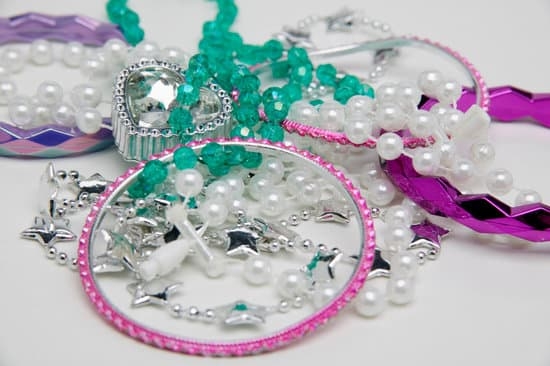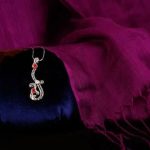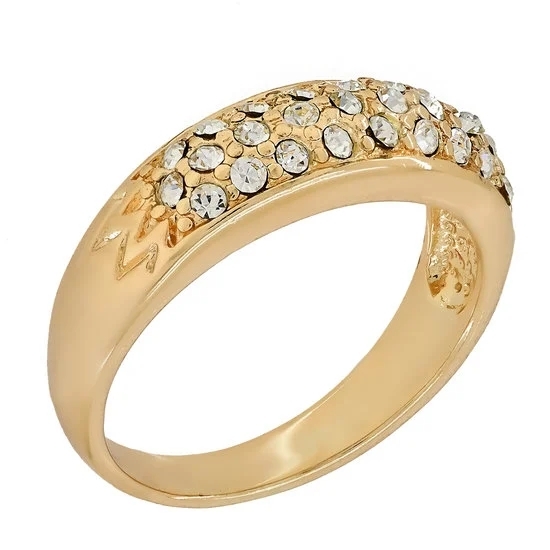Egyptian influence has long stood as a captivating source of inspiration in the world of art and design. From architecture to fashion, the rich history and symbolism of ancient Egypt have left an indelible mark on various artistic movements throughout time.
One particularly intriguing intersection lies within the realm of jewelry, where the iconic Art Deco period seamlessly merged with Egyptian motifs to create a unique and enchanting style. In this article, we will delve into the captivating world of Egyptian influence Art Deco jewelry, exploring its key characteristics, historical context, and enduring legacy.
Art Deco jewelry emerged in the 1920s as a reaction against the ornate and elaborate designs of the preceding Art Nouveau movement. It embraced streamlined geometric shapes, symmetrical patterns, bold colors, and luxurious materials to create a sense of elegance and modernity. At this time, there was a renewed fascination with ancient civilizations such as Egypt, sparked by archaeological discoveries like Tutankhamun’s tomb. This newfound interest in Egyptian culture quickly found its way into the realm of jewelry design.
Ancient Egypt holds an undeniable allure with its tales of pharaohs, deities, and intricate craftsmanship. The Egyptians were accomplished jewelers who created stunning pieces adorned with symbolic motifs that held deep meanings. These symbols emphasized different aspects of life such as protection, fertility, and royalty. Understanding these inspirations from ancient Egypt is crucial in appreciating the fusion between Art Deco aesthetics and Egyptian influences in jewelry design.
As we embark on this exploration of Egyptian influence Art Deco jewelry, we will delve into its origins in both ancient Egypt’s fascinating history and society as well as the rise of the Art Deco movement during its golden age. We’ll uncover how designers infused their creations with harmonious echoes from both worlds – merging bold shapes, exotic stones, meticulous metalwork techniques – to create breathtaking pieces that continue to captivate collectors worldwide.
Understanding Art Deco Jewelry
Art Deco jewelry is renowned for its bold geometric shapes, vibrant colors, and lavish materials. This style emerged in the 1920s and 1930s, a time of rapid social change and artistic innovation. It was heavily influenced by the machine age, ancient civilizations such as Egypt, and the decorative arts movement.
One of the defining characteristics of Art Deco jewelry is its use of geometric patterns. Clean lines and symmetrical designs were favored, evoking a sense of modernity and sophistication. Popular motifs included sunbursts, chevrons, zigzags, and stepped forms. These designs were often combined with contrasting colors to create striking visual effects.
Another key feature of Art Deco jewelry is its use of luxurious materials. Platinum became the metal of choice due to its strength and durability. Diamonds were frequently used in combination with other precious gemstones such as emeralds, rubies, sapphires, and jade. The juxtaposition of these materials added to the opulence and glamour of Art Deco pieces.
Art Deco jewelry was also influenced by ancient civilizations, particularly Egypt. The discovery of Tutankhamun’s tomb in 1922 sparked a craze for all things Egyptian. This fascination with ancient Egypt is evident in the use of Egyptian motifs such as scarabs, lotus flowers, sphinxes, and hieroglyphics in Art Deco jewelry. These symbolic elements added a sense of exoticism and mystery to the designs.
Overall, Art Deco jewelry represents a unique period in history where design boundaries were pushed and new artistic expressions flourished. Its combination of geometric shapes, luxurious materials, and influences from ancient civilizations like Egypt created a style that continues to captivate collectors and enthusiasts today.
- Geometric patterns: Clean lines and symmetrical designs
- Luxurious materials: Platinum, diamonds, and precious gemstones
- Ancient Egyptian influences: Scarabs, lotus flowers, sphinxes, and hieroglyphics
- Opulence and glamour: Contrast of materials and bold visual effects
- Continued fascination: Art Deco jewelry remains highly sought after by collectors
A Glimpse into Ancient Egypt
Egyptian jewelry has captivated the world for centuries with its rich symbolism and exquisite craftsmanship. Ancient Egypt, known for its advanced civilization and deep spiritual beliefs, serves as a significant source of inspiration for many art forms, including jewelry design. Examining the inspirations and symbolism behind Egyptian jewelry offers valuable insights into the intricate beauty of this timeless art form.
Throughout ancient Egyptian history, jewelry held profound cultural and religious significance. Egyptians believed that wearing jewelry had magical protective powers and was essential for both the living and the dead. Jewelry was not only an adornment but also a means to connect with the gods and convey one’s social status.
The materials used in ancient Egyptian jewelry varied depending on the wearer’s wealth and social class. Gold was highly prized for its association with eternity, as it did not tarnish or fade over time. Semi-precious stones such as lapis lazuli, turquoise, carnelian, and amethyst were also commonly used in combination with gold to create vibrant and eye-catching pieces.
The Symbolism behind Egyptian Jewelry
One of the distinctive features of Egyptian jewelry is its use of symbolism to convey deeper meanings. Various motifs seen in ancient Egyptian artifacts are often found in Art Deco designs influenced by this era. For example, ankh (the key of life) symbolizes eternal life; scarabs represent rebirth and protection; lotus flowers signify creation and resurrection; while falcons embody divine power.
Furthermore, hieroglyphics played a crucial role in conveying symbolic messages through jewelry. They were often inscribed onto amulets or pendants to provide protection or act as a personal talisman. Each symbol carried its own meaning, allowing wearers to express their beliefs or communicate specific ideas through their choice of ornamentation.
The iconic designs from ancient Egypt continue to inspire contemporary artists and designers who incorporate these symbolic elements into their Art Deco creations today. By embracing the history and symbolism of Egyptian jewelry, modern artisans pay homage to a rich cultural heritage while producing unique and significant pieces that honor both ancient traditions and the spirit of the Art Deco movement.
The Golden Age of Art Deco
During the early 20th century, a new artistic and design movement emerged, known as Art Deco. This movement took inspiration from various sources, including ancient civilizations like Egypt. The Golden Age of Art Deco marked a period of innovative design and luxurious aesthetics that still captivate us today.
Art Deco embraced geometric shapes, intricate patterns, and bold colors, creating a visual language that expressed modernity and sophistication. It first gained popularity in France in the 1920s but quickly spread across the globe, influencing architecture, fashion, and most notably, jewelry design.
Jewelry during the Golden Age of Art Deco was characterized by its streamlined forms and use of materials such as platinum, diamonds, colorful gemstones, and enamel. These pieces exuded elegance and glamour, reflecting the modern ideals of the time. Many notable jewelry houses embraced the style and became synonymous with Art Deco design.
– Geometric Shapes: One of the defining characteristics of Art Deco jewelry was its use of geometric shapes. Rectangular step cuts like emerald cut diamonds were popular choices for center stones in rings. Symmetrical patterns featuring triangles or chevrons were also common in necklaces, bracelets, and brooches.
– Exotic Influences: Alongside Egyptian influence, Art Deco jewelry drew inspiration from other exotic cultures such as India and China. Motifs like lotus flowers and pagodas were incorporated into designs to create an air of mystique.
– Machine Age Aesthetics: With the rise of industrialization during this time period came a fascination with machinery and technology. This influence is evident in some Art Deco pieces that showcased sleek lines mimicking streamline trains or skyscrapers.
The Golden Age of Art Deco brought forth an extraordinary movement that transformed the world of jewelry design. Today they continue to be highly sought after by collectors and enthusiasts alike, showcasing the lasting legacy of this iconic era.
A Harmonious Fusion
Art Deco jewelry is known for its geometric shapes, bold colors, and luxurious materials. It emerged in the 1920s as a response to the ornate and elaborate styles of the Victorian era. However, one significant influence on Art Deco jewelry that often goes overlooked is Ancient Egypt.
Ancient Egyptian art and culture fascinated artists and designers during the Art Deco period. The discovery of Tutankhamun’s tomb in 1922 sparked widespread interest in all things Egyptian, including jewelry. Egyptian motifs such as scarabs, lotus flowers, pyramids, and hieroglyphics became popular design elements in Art Deco pieces.
The allure of Egyptian symbolism was not only limited to the aesthetics but also linked to the cultural fascination with spirituality and mysticism. Egyptians believed in the power of symbols to convey different meanings and bring protection or luck. This influenced many Art Deco jewelers who incorporated these symbolic motifs into their designs.
| Symbol | Meaning |
|---|---|
| Ankh | The key of life, representing eternal life and vitality. |
| Scarab Beetle | A symbol of rebirth and regeneration. |
| Horus Eye | Served as a protective amulet against evil forces. |
These symbols, along with other Egyptian motifs like sphinxes, pharaohs’ masks, and snake-like serpents (which represent immortality), added a sense of mystique and elegance to Art Deco jewelry designs.
As the demand for Egyptian-inspired Art Deco jewelry grew, numerous talented designers emerged during this period. Prominent names like Cartier, Boucheron, and Van Cleef & Arpels were among those who captured the essence of both Egyptian symbolism and Art Deco aesthetics in their creations. These designers combined the clean lines and vibrant colors of Art Deco with the motifs and materials associated with ancient Egypt, resulting in stunning jewelry pieces that epitomized the harmonious fusion between the two.
Captivating Symbolism
Art Deco jewelry is renowned for its use of bold geometric shapes, vibrant colors, and luxurious materials. However, one of the most intriguing aspects of this artistic movement is its incorporation of Egyptian motifs and symbolism.
Egyptian culture fascinated Art Deco artists, leading them to draw inspiration from the rich history and symbolism of ancient Egypt. This resulted in the creation of exquisite pieces that not only showcased the opulence and glamour of Art Deco but also paid homage to the spirituality and mystique associated with Egyptian culture.
Ancient Egyptian Symbols
Ancient Egypt was a civilization rich in symbols and iconography, many of which were deeply rooted in their religious beliefs. These symbols held significant meaning and were often considered protective or imbued with magical powers. Some popular Egyptian symbols included the Eye of Horus, an ancient talisman believed to provide protection; the scarab beetle, which represented rebirth and regeneration; and the lotus flower, symbolizing purity and immortality.
Interpreting Symbolism in Art Deco Jewelry
Incorporating these ancient symbols into Art Deco jewelry allowed artisans to infuse their creations with deeper significance. The Eye of Horus, for example, often appeared as a centerpiece in pendants or brooches, serving as a symbol of protection for the wearer. The scarab beetle motif could be found carved into gemstones or molded from precious metals, signifying resilience and transformation. Lotus flowers graced rings, earrings, and bracelets to evoke themes of purity and eternity.
Spirituality meets Modernism
The fusion between ancient Egyptian symbolism and the sleek modernity of Art Deco design created a harmonious blend that resonated with those seeking both spiritual connection and aesthetic appeal. The clean lines and geometric shapes characteristic of Art Deco provided a perfect backdrop for highlighting these symbolic elements. The combination appealed not only to collectors and art enthusiasts but also to a wider audience seeking unique and meaningful adornments.
By analyzing the meaning behind popular Egyptian motifs in Art Deco jewelry, we can gain a deeper appreciation for the craftsmanship and thoughtfulness behind each piece. These creations not only represent the ingenuity and artistic flair of the designers but also serve as a reminder of the enduring legacy of Egyptian influence on the world of jewelry. Whether it be through protection, rebirth, or everlasting beauty, these captivating symbols continue to captivate generations with their timeless allure.
Notable Art Deco Influenced Egyptian Jewelry Designers
Art Deco jewelry, with its bold and geometric designs, captured the essence of the Roaring Twenties and has remained a beloved style through the years. A key element in the evolution of this movement was the influence of ancient Egypt. This section delves into the visionary designers who incorporated Egyptian motifs and symbolism into their Art Deco creations, leaving a lasting impact on the world of jewelry.
One notable designer who embraced Egyptian inspiration was Cartier. The renowned French jeweler drew heavily from Egyptian symbolism, incorporating elements such as scarabs, hieroglyphs, and sphinxes into their pieces. The iconic Tutti Frutti collection by Cartier features vibrant gemstones arranged in geometric patterns reminiscent of ancient Egyptian art.
Another visionary in Art Deco influenced Egyptian jewelry was Raymond Templier. Known for his avant-garde designs, Templier often incorporated references to Ancient Egypt. His “Egyptian Eye” line featured stylized eyes set with diamonds and colored gemstones, evoking the mystique of this ancient civilization.
Jean Fouquet was another prominent designer during this period who created stunning pieces inspired by ancient Egypt. His brooches and necklaces incorporated symbols like falcons, lotus flowers, and pyramids, creating a truly unique interpretation of Art Deco elegance.
These designers paved the way for countless others to experiment with Egyptian influences in their jewelry creations. Their innovative designs continue to inspire contemporary artists who seek to pay homage to both ancient Egypt and the Art Deco movement.
| Designer | Key Contributions |
|---|---|
| Cartier | Incorporated scarabs, hieroglyphs, and sphinxes into their pieces. |
| Raymond Templier | Created the “Egyptian Eye” line featuring stylized eyes set with diamonds and colored gemstones. |
| Jean Fouquet | Incorporated symbols like falcons, lotus flowers, and pyramids into his brooches and necklaces. |
Coveted Art Deco Egyptian-Style Statement Pieces
The Art Deco era was a time of bold and luxurious design, characterized by clean lines, geometric patterns, and an overall sense of glamour. One of the most fascinating aspects of Art Deco jewelry is its fusion with Egyptian influences, creating a unique and captivating style that continues to captivate collectors and enthusiasts today. In this section, we will explore some masterful examples of Egyptian-style statement pieces from the jewelry archives.
The Revival of Ancient Egyptian Motifs
During the 1920s and 1930s, there was a renewed interest in the art and culture of ancient Egypt. This fascination with Egyptology was largely fueled by the discovery of King Tutankhamun’s tomb in 1922, which sparked a global craze for all things Egyptian. This newfound admiration for ancient Egypt quickly made its way into the world of jewelry design.
In Art Deco Egyptian-style statement pieces, one can often find symbols and motifs inspired by ancient Egyptian mythology and iconography. The popular scarab beetle, for example, symbolized rebirth and was commonly used as a protective talisman in ancient Egypt. It frequently appears as a centerpiece or accent in Art Deco designs. Other motifs such as lotus flowers, sphinxes, hieroglyphics, and falcons also make regular appearances in Egyptian-style Art Deco jewelry.
The Magnificence of Materials
Art Deco Egyptian-style statement pieces were crafted using exquisite materials that mirrored the opulence associated with both ancient Egypt and the Art Deco era itself. High-quality gemstones such as diamonds, emeralds, rubies, sapphires adorned these spectacular pieces. However, it was not just gemstones that played a crucial role; intricate metalwork also contributed to their grandeur.
Many Art Deco Egyptian-style statement pieces featured gold-plated metal or gold-toned finishes to evoke the grandeur of ancient Egyptian jewelry. Filigree metalwork and delicate engraving techniques were often utilized to create intricate patterns, giving the pieces a sense of intricacy and fine detail. The combination of luxurious materials and meticulous craftsmanship elevated these jewelry pieces to true works of art.
Masterpieces from Prominent Designers
Numerous renowned designers embraced the allure of Egyptian influences during the Art Deco period, creating extraordinary statement pieces that seamlessly blended both styles. One notable designer was Cartier, who incorporated Egyptian motifs into their iconic Tutti Frutti designs. The house of Boucheron also created stunning Egyptian-inspired pieces with vibrant gemstones and intricate metalwork.
Another prominent name in Art Deco jewelry is Paul Flato, whose bold and theatrical designs often featured Egyptian elements. Flato was known for his imaginative use of colored gemstones and enameling techniques, creating visually striking pieces that embodied the decadence of the era.
Modern Interpretations
Contemporary artists and designers have continued to find inspiration in Egyptian influence for their art deco jewelry creations. By incorporating elements from ancient Egypt into their designs, these artists pay homage to the rich history and symbolism of Egyptian jewelry while adding a modern twist.
One way contemporary artists incorporate Egyptian influence into art deco jewelry design is through the use of geometric shapes and patterns. Art deco itself is known for its bold, angular lines and symmetrical designs, which can be traced back to the influence of ancient Egyptian architecture.
This geometric aesthetic pairs perfectly with the clean lines and graphic motifs found in Egyptian art. Contemporary artists often incorporate these geometric shapes and patterns into their pieces, creating visually striking designs that capture the essence of both art deco and ancient Egypt.
Another way contemporary artists pay homage to Egyptian influence in their art deco jewelry is through the use of symbolic motifs. Ancient Egypt was a civilization steeped in symbolism, with different symbols holding various meanings and significance. In contemporary art deco jewelry, popular symbolic motifs from ancient Egypt are often incorporated to add depth and meaning to the design. These motifs can include images like scarabs, lotus flowers, ankh symbols, falcons, or even depictions of gods and goddesses.
Contemporary artists also find inspiration in materials commonly used in ancient Egyptian jewelry making techniques. Traditional techniques such as filigree workmanship, enameled metals, or setting gemstones in elaborate gold settings are skillfully recreated by modern artisans who continue to push boundaries with innovative techniques and materials while staying true to the spirit of ancient Egyptian craftsmanship.
Overall, contemporary artists continue to find creative ways to merge Egyptian influence with the iconic style of art deco jewelry design. Through geometric shapes and patterns, symbolic motifs, and traditional jewelry-making techniques inspired by ancient Egypt, these artists bring a new vibrancy and energy to this timeless fusion of cultures. The result is a collection of stunning pieces that honor both artistic movements while creating something entirely new and unique.
Decoding the Market
When it comes to Egyptian Influence Art Deco jewelry, understanding the value and collectability of these pieces is key for both collectors and enthusiasts. The market for this type of jewelry is influenced by various factors, including rarity, historical significance, craftsmanship, and demand.
One important factor that contributes to the value of Egyptian Influence Art Deco jewelry is its rarity. Due to their age and limited production during the Art Deco era, these pieces are often considered rare and hard to come by. Additionally, the integration of Egyptian motifs and symbolism in Art Deco jewelry adds another layer of uniqueness.
The historical significance of Egyptian Influence Art Deco jewelry also plays a role in determining its value. These pieces represent a fusion of two artistic movements from different time periods – ancient Egypt and the 1920s-1930s Art Deco era. Their creation reflects the fascination with ancient cultures during that time and provides a glimpse into the cultural influences that shaped the design aesthetic of the period.
Craftsmanship is another significant factor in determining the value of Egyptian Influence Art Deco jewelry. During the Art Deco era, skilled artisans employed innovative techniques to create intricate designs with geometric shapes and bold colors. The quality of craftsmanship can greatly impact a piece’s desirability and worth.
Lastly, demand plays a crucial role in determining market value. Collectors and enthusiasts alike seek out Egyptian Influence Art Deco jewelry for its unique style and historical significance. As with any prized collectible, higher demand can drive up prices.
| Factors | Description |
|---|---|
| Rarity | Due to limited production and age, these pieces are considered rare and hard to come by. |
| Historical significance | Represents a fusion of two artistic movements and reflects the cultural influences of the time. |
| Craftsmanship | Intricate designs created using innovative techniques with attention to detail. |
| Demand | Collectors and enthusiasts seek out these pieces for their unique style and historical significance. |
Conclusion
Egyptian influence in Art Deco jewelry has created a unique and captivating aesthetic that continues to capture the imagination of enthusiasts and collectors alike. This fascinating intersection between ancient Egypt and the modern Art Deco movement has resulted in a harmonious fusion of styles, creating pieces that have stood the test of time.
Art Deco jewelry, with its bold geometric forms, vibrant colors, and intricate craftsmanship, emerged during the Golden Age of the 1920s and 1930s. It was a period of rapid cultural exchange and fascination with all things exotic, including Egyptian art and symbolism.
The ancient Egyptians were masters of jewelry-making, using precious materials such as gold, lapis lazuli, turquoise, and carnelian to create elaborate pieces that held deep spiritual significance. The reinterpretation of these motifs in Art Deco jewelry added a sense of mystery and allure to the already glamorous style.
The enduring legacy of Egyptian influenced Art Deco jewelry can be seen in both vintage pieces from the archives and modern interpretations by contemporary artists. These statement-making pieces continue to command attention for their exquisite craftsmanship and symbolic power.
Collectors value Egyptian-influenced Art Deco jewelry not only for its beauty but also for its historical significance. It serves as a tangible link between two great civilizations – ancient Egypt and the glamourous era of Art Deco – reminding us of the rich cultural tapestry that inspires artistic expression throughout history.
In conclusion, Egyptian influence in Art Deco jewelry is a testament to the timeless allure of both ancient Egypt’s symbolism and artistry as well as the enduring legacy of the Art Deco movement. This captivating fusion has given rise to masterful creations that continue to captivate collectors today.
Whether through vintage finds or modern interpretations, Egyptian influenced Art Deco jewelry remains an exquisite reminder of the beauty that can arise when cultures converge. Its enduring appeal promises to captivate future generations as we celebrate these remarkable pieces for years to come.

Welcome to my jewelry blog! My name is Sarah and I am the owner of this blog.
I love making jewelry and sharing my creations with others.
So whether you’re someone who loves wearing jewelry yourself or simply enjoys learning about it, be sure to check out my blog for insightful posts on everything related to this exciting topic!





